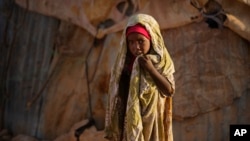Over the past two decades, much of East Africa has suffered through recurrent droughts resulting in failed crops, dying cattle and escalating food prices. The result is hunger, undernutrition and suffering for millions of people.
This year, the rains have been scant, more so than usual. This is exacerbating drought in the Horn of Africa, particularly in Somalia, Ethiopia and Kenya, where around 15 million people are suffering from food insecurity as a result.
The Famine Early Warning Systems Network, or FEWS NET, which is funded by the U.S. Agency for International Development, as well as the Food Security and Nutrition Analysis Unit for Somalia, are sounding the alarm in Somalia. They estimate that half of Somalia’s population of 12.3 million people is facing hunger or starvation. The southern agricultural and pastoral areas and northeastern pastoral areas have been hardest hit.
Over the past few years, food insecurity has been dropping in Ethiopia. The number of people requiring humanitarian assistance there has declined by half since late 2015. But as last year’s October-to-December rains failed and drought conditions developed in the country’s southern and south eastern regions, farmers and herders who had been unable to recover from the previous drought, are once again in need of assistance. According to the Government of Ethiopia and its relief partners, some 5.6 million people will need relief food assistance between January and December 2017.
Kenya is also suffering from inadequate rainfall during both the March-to-May 2016 long rain season and the October-to-December short rain season. In some parts of northern Kenya, 70 percent of water sources are already dry, and people are already suffering hunger. FEWS NET projected in January that without sustained relief assistance, crisis-level acute food insecurity could occur in some drought-affected areas of Kenya in the coming months.
So far this year, the United States government has committed more than 282 million dollars for critical relief interventions in the Horn of Africa. We call on our global partners to join us in this effort.














